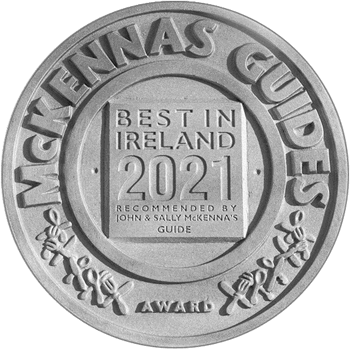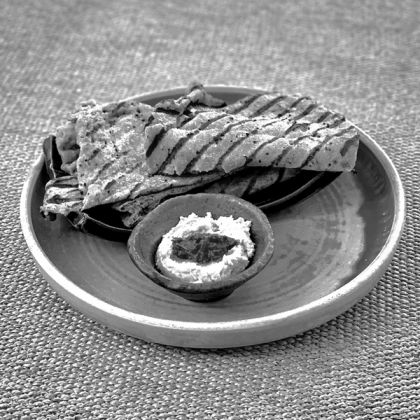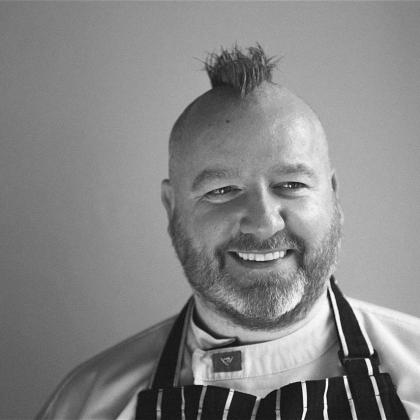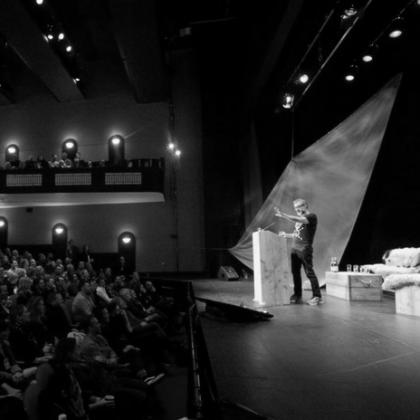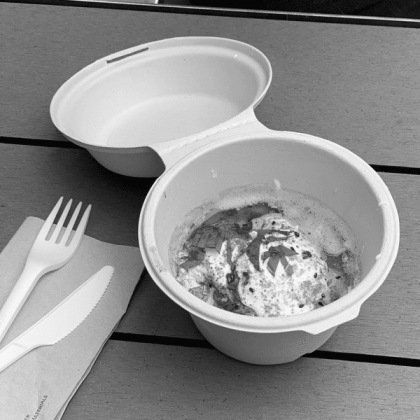There are many delicious questions to be answered when it comes to the Xmas dinner table.
This year, will we get the smoked salmon from the Burren Smokehouse, or the Connemara Smokehouse? The turkey from Gary Crocker’s farm in Wicklow? The pud from Nash 19 in Cork, or from Country Choice in Nenagh?
But maybe the toughest question is: what cheeses do we want on the Xmas cheeseboard this year?
What makes the question rather difficult to answer is that we are, fortunately, spoilt for choice. If you want a piece of blue cheese as part of your selection, then you might opt for the classic Cashel Blue from Tipperary, making sure you get one that has been aged for about ten weeks, when cashel is at its peak of tasty maturity.
But, if you like something a little more piquant, then you could go for Cashel’s near-neighbour, Crozier Blue, made using ewe’s milk. But the Tipperary duo aren’t the end of you choices, for there is also the superb Bellingham Blue, from County Louth, made by Peter Thomas using unpasteurised milk, a farmhouse cheese that in the opinion of many food lovers, knocks spots off the classic Stilton.
And in whatever way you want to compose your Xmas cheese selection, there are splendid choices to be enjoyed across the entire taste spectrum. You fancy some washed-rind cheese? What about the classic Milleens, made by Quinlan Steele down in deepest West Cork, a second-generation cheesemaker who has succeeded his parents as producer of the cheese that, more than thirty years ago, began the quiet revolution that has gifted us with some many diverse, idiosyncratic and world-class cheeses.
For there is something rather magical, and utterly unique, about the cheeses that are made on farms throughout Ireland.
Take, for instance, the cheeses made by my own local cheesemaker, Jeffa Gill of Durrus Cheese.
Ms Gill began to make the cheese that became Durrus almost thirty years ago, experimenting with the milk from her couple of cows on the stovetop in her farmhouse, up the hill of Coomkeen. Thirty years on, and that slice of Durrus you cut at the Xmas table will have been made by Jeffa, who today uses milk bought from a couple of local farmers. Every morning she heats the milk, creates the curd, then forms the cheese, then sets them on the shelves to mature.
It is a uniquely bespoke food, for where else would you be able to enjoy a food that is still made by the person who invented the cheese, a cheese that is unlike any other made anywhere in the world?
Cheesemakers have a saying for this sort of magic. The cheese they finally invent, after all the trials and the botched efforts and the failed experiments, is, they say, “the cheese that wanted to be made”. In other words, they must marry the individual qualities of the milk they work with to the precise micro-flora of the place where they make it.
With most of the cheeses produced in the world, this sort of intense specificity never happens. If you are a farmer milking a herd in Italy where the milk is destined to make Parmesan cheese – Parmigiano Reggiano – then your milk will be subsumed with the milk of thousands of other farmers to make a cheese that is produced according to rigid guidelines and laws.
Most Parmesan is of superb quality, but it is a regimented quality, a cheese that must sing from the same hymn sheet as every other Parmesan.
But Irish cheeses, in comparison, are riffing on the melody of the hymn sheet, they are improvising on it every day, like jazz musicians tearing a melody apart only to recreate it in their own image.
The interesting thing is that this free-form, idiosyncratic and individualistic food creation now has a distinguished history. CAIS, the Irish association of farmhouse cheesemakers, recently celebrated its twenty-fifth anniversary.
Of its seven founding members, five cheeses are still today made by the people who invented them: Coolea from North Cork; Carrigbyrne from Wexford; and the mighty trinity of West Cork washed-rind cheeses, Milleens, Durrus and Gubbeen. Every day, the cheesemakers make the cheese, they mature it, they mind it.
Their work is a precious gift to our table at any time of the year, for every cheese is, in fact, a piece of fine art, every cheese is a unique expression of a person, a place, and a passion to make beautiful food.
This year, will we get the smoked salmon from the Burren Smokehouse, or the Connemara Smokehouse? The turkey from Gary Crocker’s farm in Wicklow? The pud from Nash 19 in Cork, or from Country Choice in Nenagh?
But maybe the toughest question is: what cheeses do we want on the Xmas cheeseboard this year?
What makes the question rather difficult to answer is that we are, fortunately, spoilt for choice. If you want a piece of blue cheese as part of your selection, then you might opt for the classic Cashel Blue from Tipperary, making sure you get one that has been aged for about ten weeks, when cashel is at its peak of tasty maturity.
But, if you like something a little more piquant, then you could go for Cashel’s near-neighbour, Crozier Blue, made using ewe’s milk. But the Tipperary duo aren’t the end of you choices, for there is also the superb Bellingham Blue, from County Louth, made by Peter Thomas using unpasteurised milk, a farmhouse cheese that in the opinion of many food lovers, knocks spots off the classic Stilton.
And in whatever way you want to compose your Xmas cheese selection, there are splendid choices to be enjoyed across the entire taste spectrum. You fancy some washed-rind cheese? What about the classic Milleens, made by Quinlan Steele down in deepest West Cork, a second-generation cheesemaker who has succeeded his parents as producer of the cheese that, more than thirty years ago, began the quiet revolution that has gifted us with some many diverse, idiosyncratic and world-class cheeses.
For there is something rather magical, and utterly unique, about the cheeses that are made on farms throughout Ireland.
Take, for instance, the cheeses made by my own local cheesemaker, Jeffa Gill of Durrus Cheese.
Ms Gill began to make the cheese that became Durrus almost thirty years ago, experimenting with the milk from her couple of cows on the stovetop in her farmhouse, up the hill of Coomkeen. Thirty years on, and that slice of Durrus you cut at the Xmas table will have been made by Jeffa, who today uses milk bought from a couple of local farmers. Every morning she heats the milk, creates the curd, then forms the cheese, then sets them on the shelves to mature.
It is a uniquely bespoke food, for where else would you be able to enjoy a food that is still made by the person who invented the cheese, a cheese that is unlike any other made anywhere in the world?
Cheesemakers have a saying for this sort of magic. The cheese they finally invent, after all the trials and the botched efforts and the failed experiments, is, they say, “the cheese that wanted to be made”. In other words, they must marry the individual qualities of the milk they work with to the precise micro-flora of the place where they make it.
With most of the cheeses produced in the world, this sort of intense specificity never happens. If you are a farmer milking a herd in Italy where the milk is destined to make Parmesan cheese – Parmigiano Reggiano – then your milk will be subsumed with the milk of thousands of other farmers to make a cheese that is produced according to rigid guidelines and laws.
Most Parmesan is of superb quality, but it is a regimented quality, a cheese that must sing from the same hymn sheet as every other Parmesan.
But Irish cheeses, in comparison, are riffing on the melody of the hymn sheet, they are improvising on it every day, like jazz musicians tearing a melody apart only to recreate it in their own image.
The interesting thing is that this free-form, idiosyncratic and individualistic food creation now has a distinguished history. CAIS, the Irish association of farmhouse cheesemakers, recently celebrated its twenty-fifth anniversary.
Of its seven founding members, five cheeses are still today made by the people who invented them: Coolea from North Cork; Carrigbyrne from Wexford; and the mighty trinity of West Cork washed-rind cheeses, Milleens, Durrus and Gubbeen. Every day, the cheesemakers make the cheese, they mature it, they mind it.
Their work is a precious gift to our table at any time of the year, for every cheese is, in fact, a piece of fine art, every cheese is a unique expression of a person, a place, and a passion to make beautiful food.
